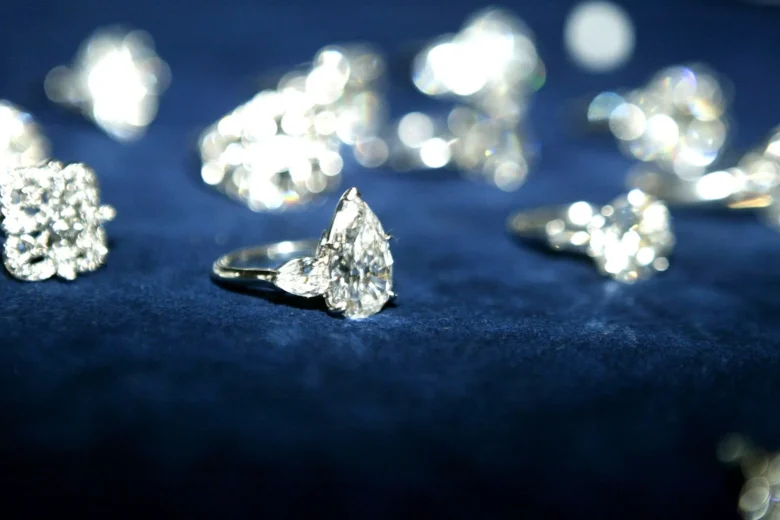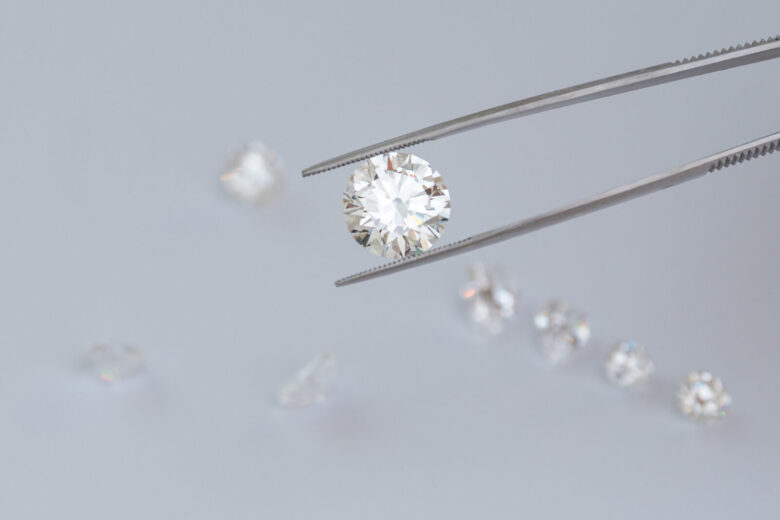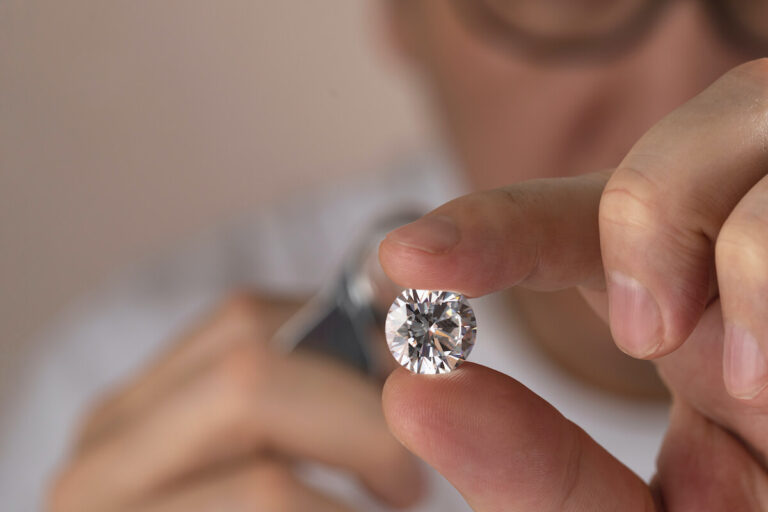The emergence of artificial diamonds caused a seismic shift in the jewelry market. Just for a few years, they won the hearts of buyers, manufacturers, and retailers. And now one unlikely can imagine the diamond industry without these ethical and affordable substitutes for natural gems.
They have not predicted a prosperous future and emerged just as a way to decrease the costs needed to launch innovative technology. The thing is that diamonds are the #1 thermal conductor because of their tough and durable constitution. Using them in computer chips allows fastening of the operational processes. Yet, natural diamonds are expensive enough to use for the needs of the IT sector. Therefore, science intended to recreate diamonds in laboratory settings by mimicking the process that is naturally occurring in the Earth’s crusts. This intention was crowned with success, which became a true breakthrough not only in the world of technology but also in the jewelry industry.
Being identical to natural gems, artificial diamonds happened to have many economic, value, and fashion advantages and became top-sold products in just a few years. In 2022, the artificial diamond industry reached a first significant point – 10% of sales globally. Reaching this point so early was not predicted since analysts expected this to happen somewhere in 2025. Yet, the temps of growth have increased unexpectedly in 2020. Just for two years sales raised in 4 times.
Many analysts explain this phenomenon by the low price of artificial diamonds. Maybe, that is true, but one should not forget that price is just the tip of the iceberg; many factors that precondition the low price are hidden under the water’s surface. Decreasing the cost of manufacturing is one of them. Indeed, if addressing analytics since the early 2000s the cost of producing artificial diamonds has halved every four years. Sure, cost-effective production processes could not help but promote the product’s price decline as well.
It is also worth mentioning the retail margin is very high for artificial diamonds if compared to natural diamonds. This also creates room for better pricing.
Popularity itself matters too. The greater demand is related to bigger production volumes and to consequent low prices.

So, what fuels the popularity of artificial diamonds except for affordable price?
Quality and customization opportunities
Artificial diamonds have a similar set of properties to their natural counterparts. Nobody, including experts, can see the difference between these two by the naked eye. One can identify origin only using special professional tools and sometimes even double-checking is needed to ensure that there is no mistake. So, for the average consumer, who likes diamonds, there are no risks or losses in their jewelry’s appearance and durability in use.
Yet, there are many advantages they get when buying artificial diamonds. Having a modest budget, the buyer can purchase big artificial diamonds that he or he could not afford if buying natural ones. The size of the diamonds matters for consumers, and they have more freedom in choice with artificial diamonds. The price gap between natural and man-made diamonds is even greater for huge diamonds than for tiny pieces.
Size also plays a great role in customizing jewelry and making it individual-oriented. The bigger the size of rough artificial diamonds the better opportunities are for different cutting and developing unique designs. Currently, Gen-Zers are the core purchasers, who set the rules and create trends in the jewelry market, and they want to have incredibly unique specimens for their gifts and engagement rings. They used to celebrate life and every moment and thus have more daring ideas for custom design. Artificial diamonds enable jewelers to meet these expectations.
As the next aspect fueling popularity, one should mention sustainable reasoning. The origin of artificial diamonds is of high importance since it made it possible to minimize the threats to the environment. Artificial diamonds are called ethically sourced products. It means that there is no need to drill the Earth, ruin ecosystems, and make people work hard in unfavorable conditions.
A final core aspect is the innovative potential of the industry. The artificial diamond industry is innovative by default since its emergence initially is closely linked to an innovative approach. Yet, the process of improvement is continuing. Madestones, the European leading trader, predicts that in the next few years, we can expect to see many breakthroughs.

Sustainable Production: The Eco-Friendly Choice
The production of artificial diamonds offers a significant environmental advantage over mining natural diamonds. The mining process for natural diamonds often involves extensive excavation, which can lead to soil erosion, deforestation, and ecosystem disruption. In contrast, creating artificial diamonds in a lab setting has a much smaller ecological footprint. These laboratories use advanced technologies that require less energy and produce fewer carbon emissions compared to traditional mining operations.
The Ethical Advantage: Conflict-free and Worker-Friendly
Artificial diamonds also offer a significant ethical advantage, being free from the conflicts often associated with diamond mining. The diamond mining industry has historically been plagued by issues such as child labor, worker exploitation, and funding armed conflicts, particularly in certain African nations. This has led to a growing concern among consumers about the origins of their diamonds.
Artificial diamonds provide a conflict-free alternative, ensuring that consumers can enjoy the luxury of diamonds without contributing to these ethical dilemmas. Additionally, the production of artificial diamonds typically involves better working conditions and fair labor practices compared to the often harsh and dangerous environments found in diamond mines.

The Wedding Revolution: Artificial Diamonds in Bridal Jewelry
The surging popularity of artificial diamonds has revolutionized the bridal jewelry sector, a domain traditionally dominated by natural diamonds. In recent years, more and more couples have gravitated towards artificial diamonds for their engagement rings and wedding bands. This shift is largely attributed to the blend of affordability, ethical sourcing, and customizable options that artificial diamonds offer. For many couples planning a wedding, budget constraints are a significant concern.
Artificial diamonds provide a cost-effective solution without compromising on the aesthetic and symbolic value of the jewelry. Furthermore, the growing awareness and preference for ethically sourced and environmentally friendly products among younger generations have made artificial diamonds a go-to choice for modern nuptials. The ability to customize jewelry with artificial diamonds, offering unique designs and sizes that might not be feasible with natural diamonds, also plays a pivotal role.
This trend aligns with the desire for personalized and unique wedding elements, reflecting the couple’s style and story. The wedding industry’s embrace of artificial diamonds not only reflects changing consumer preferences but also underscores a broader shift towards sustainability and personalization in wedding planning.
The Role of Technology and Innovation in Diamond Production
The technological advancements in the production of artificial diamonds have been a key factor in their rising popularity. The industry has seen continuous innovation in methods such as High-Pressure High Temperature (HPHT) and Chemical Vapor Deposition (CVD), making the production process more efficient and cost-effective. These technologies not only replicate the natural formation of diamonds but also allow for greater control over the quality and characteristics of the final product.

This has led to the creation of diamonds that can rival or even surpass natural diamonds in terms of clarity, color, and carat. Furthermore, ongoing research and development in this field promise even more exciting possibilities, such as the creation of diamonds with unique properties or colors that are rare or nonexistent in nature.

